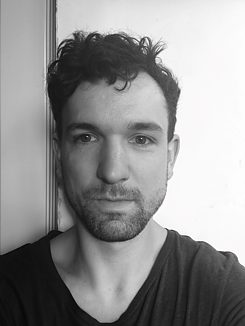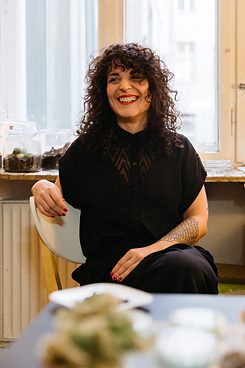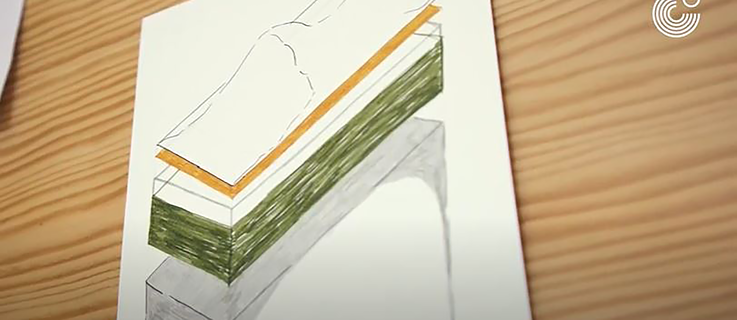Imagining Ecological Futures - Art & Design Residency
The Goethe-Institut Brussels in collaboration with KIKK Festival, its Creative Hub & Fab Lab TRAKK and the cultural center Les Abattoirs de Bomel are awarding a grant for a residency project on ECOLOGICAL FUTURES. The residency program will take place in Namur from the 1st of June to the 1st of July 2019.
The project is aimed at artists, students and recent graduates in the art and/or design field. People with backgrounds in other disciplines are also welcome to submit their applications. We are inviting two residents in total: one from Germany and one from Belgium. To be eligible you need to be resident in one of the 2 countries (for at least 2 years) or to have the country nationality.
 © François Winants
What interests you in the subject – imagining ecological futures, how do you envisage it?
© François Winants
What interests you in the subject – imagining ecological futures, how do you envisage it?
In a time where we perceive at our own scale the impact of the Anthropocene era, I am interested in both the relationships that humans have with their environment as well as scientific advances in mimicry. I have a great interest in the temporality of the human and the nature.
What is the project you want to develop in Namur about?
The project involves the production of drawing instruments where the subject becomes a co-author of the work. Inspired by digital applications, the instruments position themselves analogically close to the subject. Beyond the experimental aspect there is a constant reflection between design and art, art and science, the act of the artist and the machine, the analog and the digital, the natural and the artificial at the centre of the process.
Why did you choose the residence in Namur and what are your expectations?
The choice of residence is first of all due to the proposed theme. It is an opportunity for me to immerse myself into a different context and get out of the usual comfort zone. The residence is a lucky chance where I have the opportunity to focus on different aspects of work at a specific location and time.
 © Fara Peluso
Why are you interested in ecological future scenarios?
© Fara Peluso
Why are you interested in ecological future scenarios?
As artist and designer I'm interested to practice a methodology more inclined to researching, speculating and rising critical questions about the contemporary condition of a whole system where not only humans are present but all the orgamisms too. The speculative design is an effective tool for analyzing the present, our desires and ills, it helps to understand what could be our ways of 'living' in a possible future. In my work I consider important to match the artistic approach with the role of a social investigator designer, because art gives big space to aesthetic experimentation but also brings in depth the researches discovering meanings related with a work or a daily use object. Objects are extention of us, they can express who we are, what we think and how we want to live. I like to see them an outside connection of our bodies, starting from our mind and able to change the world where we live. They are not only connected with our present but above all with our future.
What kind of project would you like to develop for the residency in Namur?
Since 2014 my artistic research is mainly focus on algal organisms, their ecosystems and their relationships with human beings. For the Residency in Namur I will develop an art project called Memory Matter which is part of my research on Algal Bloom phenomenon with the intent on recounting its reasons. Algal blooms are the resulst of an excess of nutrients in the water (in particular phosphorus and nitrogen) and these higher concentrations cause an increase in the growth of algae and green plants, producing a reduction of O2, harmful consequences and dead areas. The causes of this event are linked with the production and consumption activities of human being like agriculture, industry, urban life and climate change with the rising of temperatures and the amount of CO2. During my residency I will research on this topic and make experiments trying to reproduce in my studio and inside closed ecosystems an algal bloom. This material will be used by me to getting inspired and develop an art installation for the public, an occation to talk about a pollution problem and its causes. I will study this phenomenon in connection with the nearby Namur areas riproducing them in 3D prints models and as part of several totems. Another scientific tool will be experimented trough a DIY Biology approach, the chromatographic technique will be the process that will allow the algal pigments to evaporate and stand on the surface of the 3D models. Memory Matter will raise a public awareness about climate changes, the transformation of our landscapes and how the construction of a collective memory is fundamental to understanding and acting together. The concept of memory will therefore have two channels of communication, one linked to the collective memory of the spectators and one to the almost invisible transformation of a liquid matter. It will show to pubblic the meaning of scientific research and why it’s now important collect a memory as fundamental approach, a tool to rise discussions, understand future climate changes and learn how to prevent drastic conseguences.
Why did you decide to apply for the residency in Namur and what do you expect?
Memory Matter project for Namur residency will establishing a discurse and a collaboration between different fields of research, the scientific and the artistic one. A team of scientists from the University of Namur, involved in 2006 in “B-BLOOM” algal bloom research project , will be asked to give a contribute and feedbacks about the actual situation in Wallonia Region. Memory Matter will be mainly focused on Namur area taking inspiration by a scientific research carried out by the University of Namur, the Research Unit in Environmental and Evolutionary Biology. Based on researches and new experiments the project will be focused on Falemprise Lake which is of particular interest as it is an official swimming area located in the Eau d'Heure lakes and where diverse recreational activities take place. These are the reasosns why I've decide to develp this project for the residency in Namur, contributing also to building new connections between art, design and science.
The subject of the residency is the imagination of ecological futures
The residency gives artistic researchers from various fields the opportunity to work on the intersection of art, design, and environment. The aim is to develop useful arts-led interdisciplinary research tools and art works to examine how cultural practitioners critically address and creatively negotiate ecological futures. The call includes the research field of climate change and global warming, models of human and non-human co-existence and the interrelationships of different ecosystems, in relation to the following questions: How can we decolonize nature and initiate a social-ecological transformation towards a post-fossil age? How do new models of human and non-human co-existences look like? What kind of promising changes does biotechnology offer? And how can we create a new consciousness and awareness regarding the imbalance of nature and culture?The project is a cooperation between three partners: the Goethe-Institut Brussels, the globally active cultural institute of the German Federal Republic, Les Abattoirs de Bomel, an interdisciplinary cultural center of the Wallonian capital Namur with rooms for exhibitions and residencies and the KIKK Festival. This annual festival for creative and digital culture researches how new technologies will affect art, science and design. The creative hub TRAKK, which belongs to the festival and is a space for collective, multidisciplinary design, places its laboratory (Fab Lab: FABrication LABoratory) at the residents’ disposal.
The residents’ main focus should lie on acquainting themselves with new technologies within the TRAKK laboratory while benefiting from professional assistance. A final product is not compulsory. The residents are free in the realization of their projects. They may choose to create a project in collaboration with the other resident. After consultation with the organizers, the project may also be exhibited at the KIKK Festival in November.
During their residency, the artists will have to participate in a cultural activity in which they share details about their work practice or research with the audience of Abattoirs de Bomel, it can be a workshop, a talk, a discussion or anything else. This will be decided with the artists during their stay in Namur.
The grant includes:
- A budget of €5.000 per resident. This includes the expenses for materials, food and travel for a period of four weeks.
- A private flat (39 to 47m2) with a bathroom, kitchen nook, space to sleep and work and access to the internet.
- Access to the TRAKK Fab Lab, including the use of all machines (3D printer, cutting plotter, milling machine with numerical control, laser cutter, wood working tools, and other technology) and on-site assistance.
- Use of the studios within the Abattoirs de Bomel (wood working, iron working and screen printing studios; assistance and introduction by the technical management).
Application
Please submit your application to Jana J. Haeckel (jana.Haeckel@goethe.de) until the 31st of March 2019 including the following documents:- CV in English or French.
- Personal statement in English or French.
- Project outline with images and technical drawings, if possible (in English or French)
- We also accept unfinished projects, which could use further funds in order to be completed, or finished projects, which could use further funds in order to be expanded upon. In the latter case, please outline how further funds will help your project.
- Budget planning in English or French.
